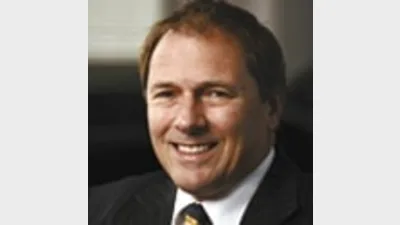Savvy consumers to transform financial services



 2012 will be the year of the savvy consumer – and the financial services industry is preparing for this new trend, writes Jim Minto.
2012 will be the year of the savvy consumer – and the financial services industry is preparing for this new trend, writes Jim Minto.
The Chinese Zodiac tells us that 2012 is the Year of the Dragon. Our dynamic financial services world is preparing for a new force to enter – the well-educated, all-powerful consumer.
Highly selective, value driven, transacting online, thinking independently, price and service savvy, this new consumer presents a bigger challenge than any our industry has yet encountered.
With the momentum of recent Government reforms and the media focus, the customer of 2012 will also be quick to sense risk and seek out the bright light of transparent engagement with our industry’s brands, products and services.
Already the industry has experienced clear evidence that the new age of consumerism brings with it profound change. Change of a magnitude that will, long term, transcend all of the past 12 months of government regulatory intervention served up to our industry.
Rather than string all the potential risks, opportunities, challenges and roadblocks together, this article proposes to discuss just three simple changes. Each represents a new tool currently being forged in the furnace of our rising consumer society.
How these tools are applied will depend on which hand seizes them first. Let me explain:
1. The tool of first-mover advantage
Government called the shots in 2011. But 2012 will be the year when consumers take the controls. Our industry – through its products, services and distribution models – must heed that call in order to build a sustainable future. First movers who meet this head-on will be best placed to prosper.
Take financial advisers as an example. Many financial advisers have already done the hard thinking and have acted to clarify their value proposition and remuneration models to clients. The underlying business of financial advice has also shifted markedly.
Historically, financial advice businesses changed hands based on the quantum of remuneration received by advisers – including some that consumers were not fully aware of.
The situation has changed, drawing the client relationship and business underpinnings further out into the open. Such unprecedented transparency is a game changer.
What will this lead to? First movers may begin to offer simple, specialised approaches to niche financial advice areas. The holistic ‘one-stop shop’ may no longer work for the educated consumer who seeks advice on just a select part of their wealth, and is happy to act as their own ‘central caretaker’ with select inputs from a number of specialist advisers.
Pricing power for financial advisers will rest with the adviser’s ability to offer a clear, well-articulated value proposition that meets the consumer on their terms.
One clear opportunity is the area of personal insurances – Australia remains grossly underinsured as a nation. And while life insurance can be bought anywhere, at any time, it is largely an advised sale. In other words, people need the financial advice. The product decision and access lies much more with the individual.
Another pocket of opportunity might well include the provision of self-managed super fund (SMSF) services and truly tailored advice.
What do I mean by tailored advice?
Financial advice that acknowledges that clients now have a far deeper appreciation of risk, and thus more refined ‘risk appetites’. Preservation of capital is quite clearly a dominant consideration as retail and institutional investors ask: “How do I avoid losing money?”.
That question will remain central to financial advice conversations throughout 2012. We can expect to see continued strong growth in the SMSF sector as many consumers distrust collective superannuation schemes and take control of their investment risk.
2: The tool of branded distribution, refashioned for 2012
We may be driving at breakneck pace towards a reasonably uncertain consumer dynamic. Ironically, however, many industry strategists have thrown their ideas generation into reverse, going back to past models in search of future viability.
Anyone who has been around long enough to remember the ‘allfinanz’ model of the 1990s will see that it is expected to have a mini-resurgence in 2012. It would indicate that many financial services brands believe the only way to remain viable in the new environment is to create vertically integrated silos.
The regulatory changes to the open architecture of the industry’s underlying business structures have actually created a fresh round of product manufacturers building higher walls around their product, service and distribution models.
Is ‘silo thinking’ a good idea? It remains to be seen if going back to the future will pay off. Frankly, the consumer will choose which brand he or she connects with in terms of financial products and services.
It is up to each organisation to adapt to consumer demand as a primary lever – not necessarily to engineer their business around underlying payment issues.
The consumer expectation is that they will either go to a brand expecting to be delivered the house products or they will seek financial advice that is product neutral and focused on their interests.
The past 10 years have seen financial advice models built around the latter – and it is the industry and government walking away from this rather than consumers themselves. Many consumers still want independent advice and rejected vertical models 20 years ago.
At the institutional end – is vertical integration smart strategy or pure survival? Many financial advisers may feel their choices are limited to operating within a vertically integrated structure. Personally I’m not so sure, and believe that alternative models can flourish in a post-reform world.
Such models would have strong brand, strong value proposition, and strong alignment with consumer demand.
The rise of silo institutions – from bank account to loans, investments and insurance to financial advice – may be unstoppable after the Future of Financial Advice changes, but is this good for consumers or what consumers want? It remains to be seen. Back to the future – we go for the present.
3: The tool of eyeballing your future
Whether we like it or not, Australians are increasingly going online to transact. Recent data (Commonwealth Bank Equities: Online retail data) indicates online retail spending had increased by a staggering 36 per cent over the 12 months to October 2010.
In other words, a $12.3 billion spend during that year. To me, such data underlines the importance that Australians place on their online experiences.
Does the propensity for more Australians to purchase online threaten our sector? No. Does it change the way we do business? Absolutely.
But if I were a betting man I would wager that no amount of 24/7 click-through connectivity will ever replace the value of the eyeball when it comes to advice.
Financial advisers acting as the trusted partner making eye contact with their client, guiding and counselling them, and working in partnership, will almost certainly prevail as a business case. Wealth is building and as superannuation grows the needs of consumers become greater. A huge opportunity is before a provider of quality financial advice.
As our industry orients towards the customer, both the institutions and the individual adviser need to keep improving communication – talking about the value of financial advice, the value of long-term savings matched to risk profile, and the value of protection through insurance, regardless of markets.
In summary, to return to my opening about the Year of the Dragon, a quick Wikipedia search tells me the dragon represents a symbol of good fortune and immense power.
I can think of no more apt description for the new age of consumerism we are entering in 2012.
The good fortune for our industry will come for those prepared to return to fundamentals. This means a renewed focus from financial advisers, banks, fund managers and insurers on the basics: the real value of our services for consumers who are ever-more self-directed and demanding. As they should be.
Jim Minto is the managing director of TAL Limited (formerly TOWER Australia).
Recommended for you
In this episode of Relative Return Insider, host Keith Ford and AMP chief economist Shane Oliver unpack the RBA’s decision to keep the cash rate on hold in the face of rising inflation and whether the governor’s hawkish tone is a sign of things to come.
In this episode of Relative Return Insider, host Keith Ford and AMP chief economist Shane Oliver discuss the September quarter GDP figures, which show Australia’s economy regaining momentum.
In this new episode of The Manager Mix, host Laura Dew speaks to Haley Devine, head of wealth management at MaxCap Group, to delve into private credit and commercial real estate.
In this new episode of The Manager Mix, host Laura Dew speaks to Benjamin Leung, head of systematic investments at Macquarie Asset Management, to understand the use of systematic investments.







